The Ultimate Guide to Out-of-Home (OOH) Advertising: Trends, Benefits, and Examples
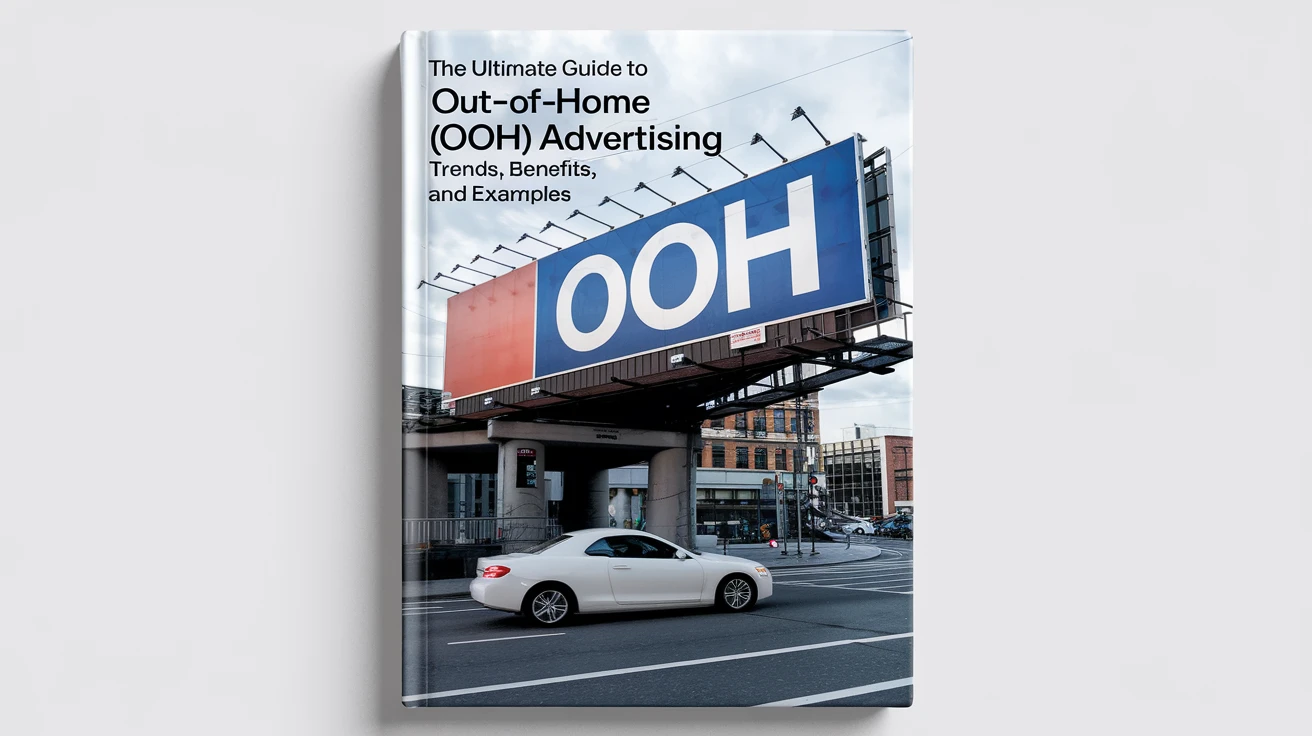
What is Out-of-Home (OOH) Advertising?
Out-Of-Home (OOH) advertising refers to any form of advertising displayed in public spaces. Whether it's a billboard on the highway, ads on bus shelters, or displays at shopping malls, OOH advertising helps brands reach large audiences in their everyday environments.
In simpler terms, OOH advertising is about showcasing your brand or message where people spend most of their time outside their homes. This can include traditional forms, like static billboards, and modern, technology-driven digital billboards, also known as Digital Out-of-Home (DOOH) advertising.
Types of Out-of-Home (OOH) Advertising
with Examples
Out-of-Home (OOH) advertising is a versatile and impactful way to reach audiences where they are—outside their homes. It includes various formats, both traditional and digital, that let brands communicate with their target audience in public spaces. Below are the primary types of OOH advertising and real-world examples that illustrate their effectiveness.:
1. Billboards (Traditional & Digital)
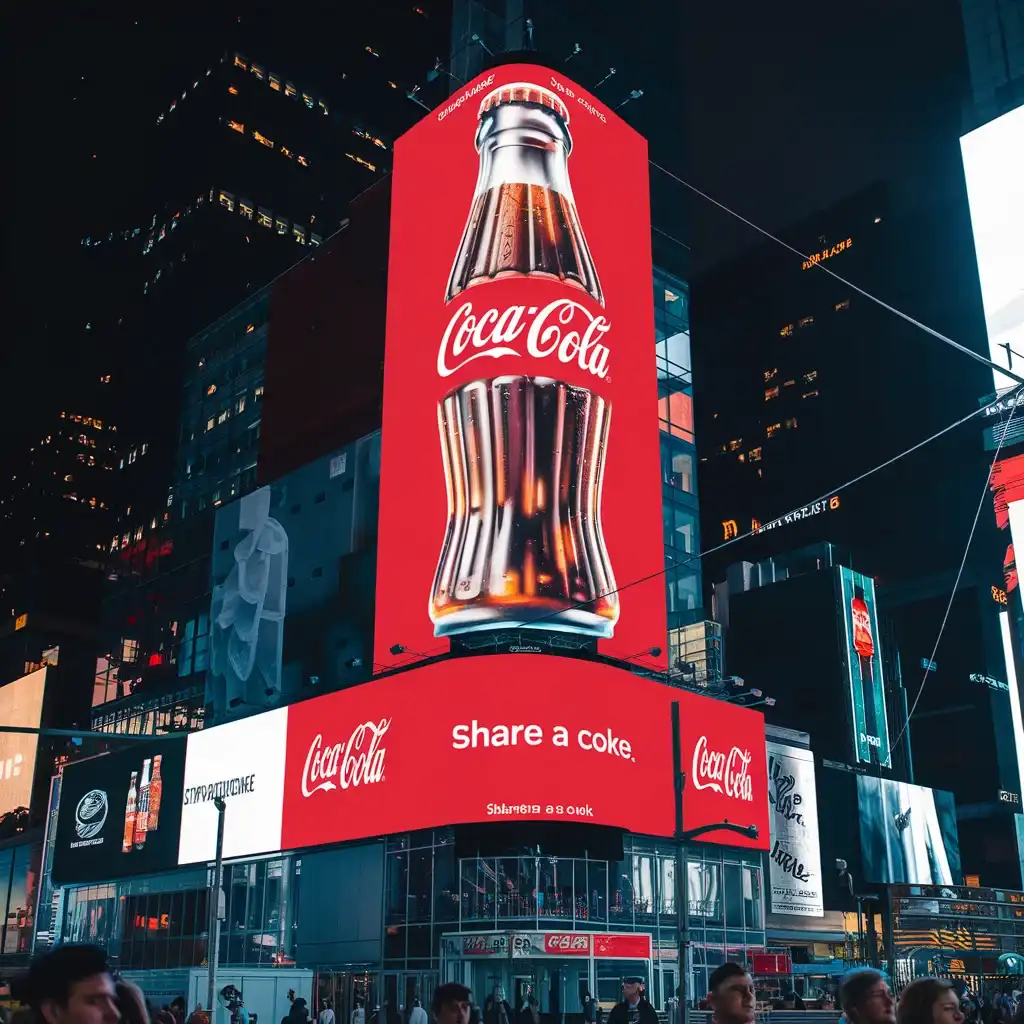
Billboards are the most recognized form of OOH advertising. These large, visually striking displays are typically placed along highways, busy streets, or high-traffic areas, making them hard to miss. They can be static (traditional) or dynamic (digital), offering creative and interactive campaign opportunities.
- Traditional Billboards: Static images and bold messages on
large boards, often seen on highways.
- Example: McDonald's uses simple, bold billboard designs showcasing burgers and fries with a tagline like "Next Exit for a Meal."
- Digital Billboards: LED-powered screens that display rotating
or animated ads. These are often updated in real-time to deliver time-sensitive
messages.
- Example: Coca-Cola's famous digital billboard campaigns that display glowing animations and interactive visuals in Times Square.
2. Street Furniture Advertising
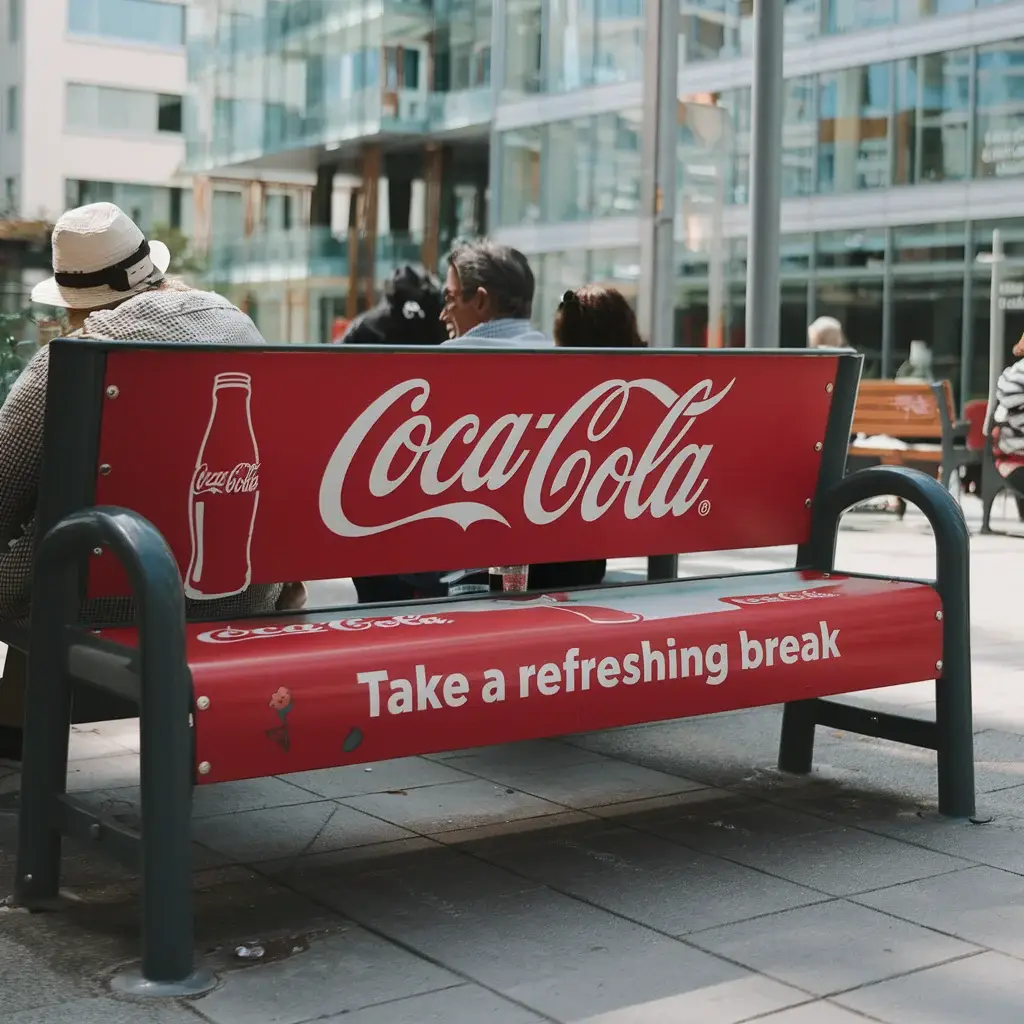
Street furniture ads are strategically placed in urban areas where people gather or commute. This includes advertising on bus stops, benches, kiosks, and public charging stations. These placements leverage people's time waiting for buses or sitting in public spaces.
- Example: A sunscreen brand creates UV-sensitive ads on bus shelters, which change color under sunlight, creatively demonstrating the importance of sun protection.
- Another Example: Coca-Cola placed ads on public benches with the tagline, "Take a Refreshing Break," making the ad functional and engaging.
3. Transit Advertising
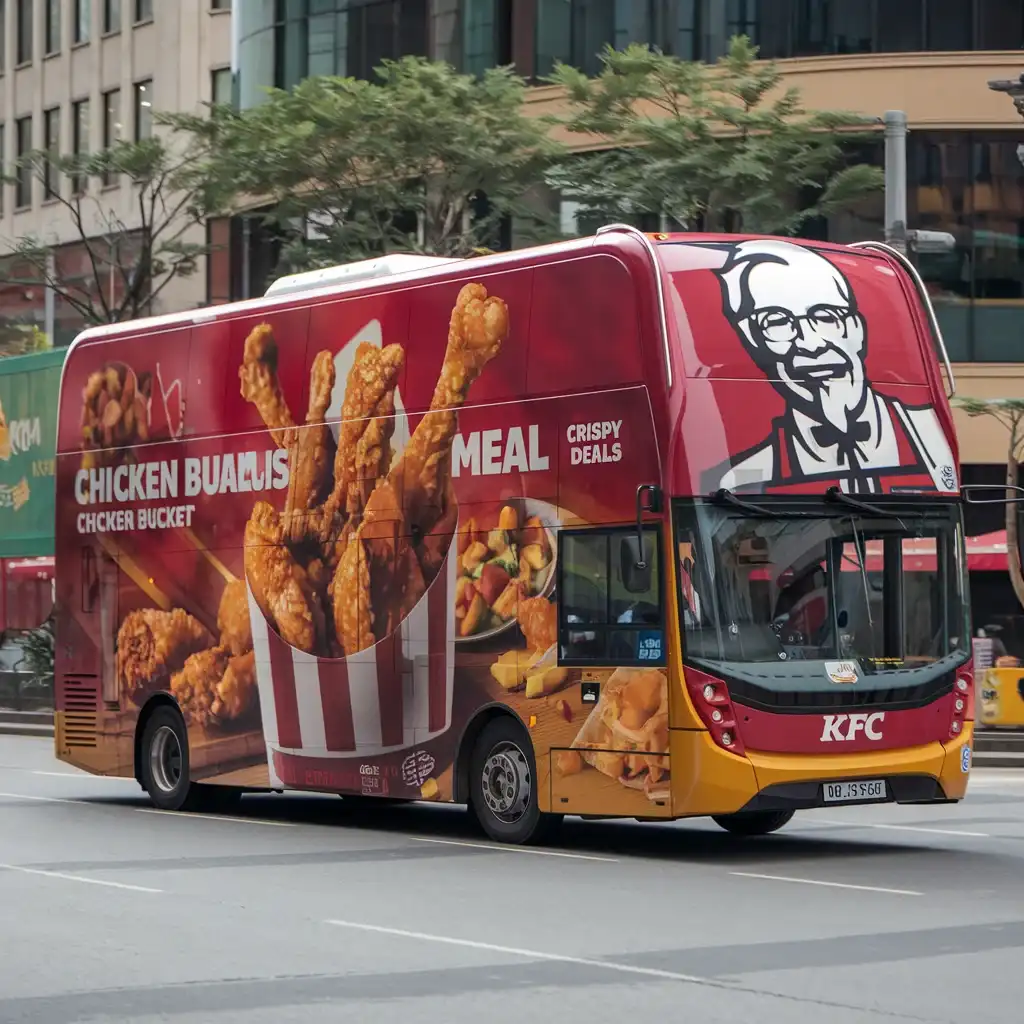
Transit advertising refers to placing advertisements on public transportation, including buses, trains, subways, and taxis. Since these vehicles travel through cities and towns, they provide extensive visibility and reach a diverse audience.
- Example: A fast-food chain like KFC promotes meal deals by wrapping an entire bus with images of their signature chicken bucket, enticing commuters and passersby.
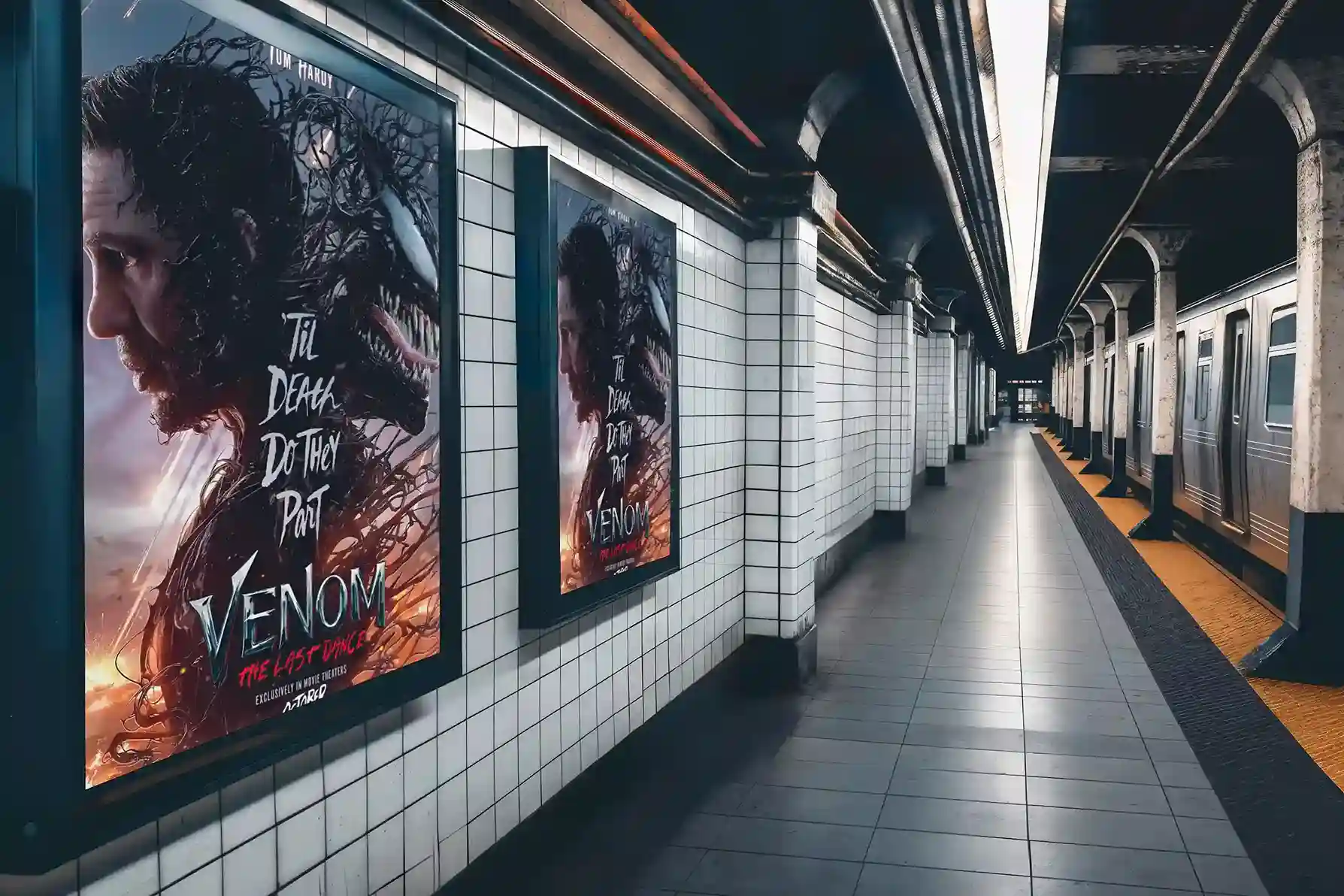
- Another Example: A movie production company uses subway station ads to showcase upcoming film posters and trailers, creating excitement among daily commuters.
4. Place-Based Media
Place-based media refers to advertisements in specific venues where people gather, such as shopping malls, airports, gyms, stadiums, or movie theatres. These ads target specific audiences based on the venue and their interests.
- Example: Fitbit advertises its fitness trackers inside gyms and wellness centers, targeting health-conscious individuals where they are most likely to engage with the product.
- Another Example: Luxury car brands advertise at airport lounges, showcasing sleek designs to affluent travelers.
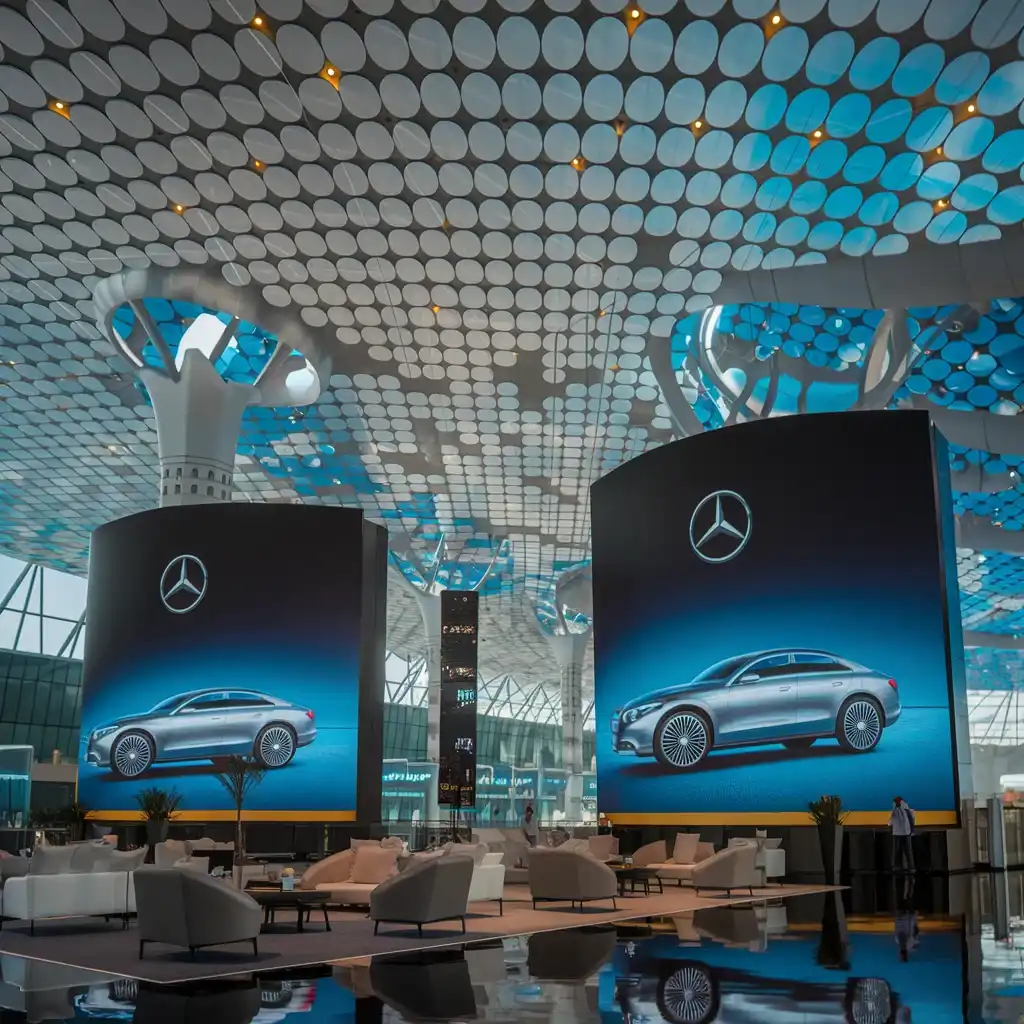
Additional Examples of OOH Advertising
1. Interactive Billboards:
- Example: Pepsi installed interactive vending machines as billboards that allowed pedestrians to grab a free drink by completing a fun challenge.
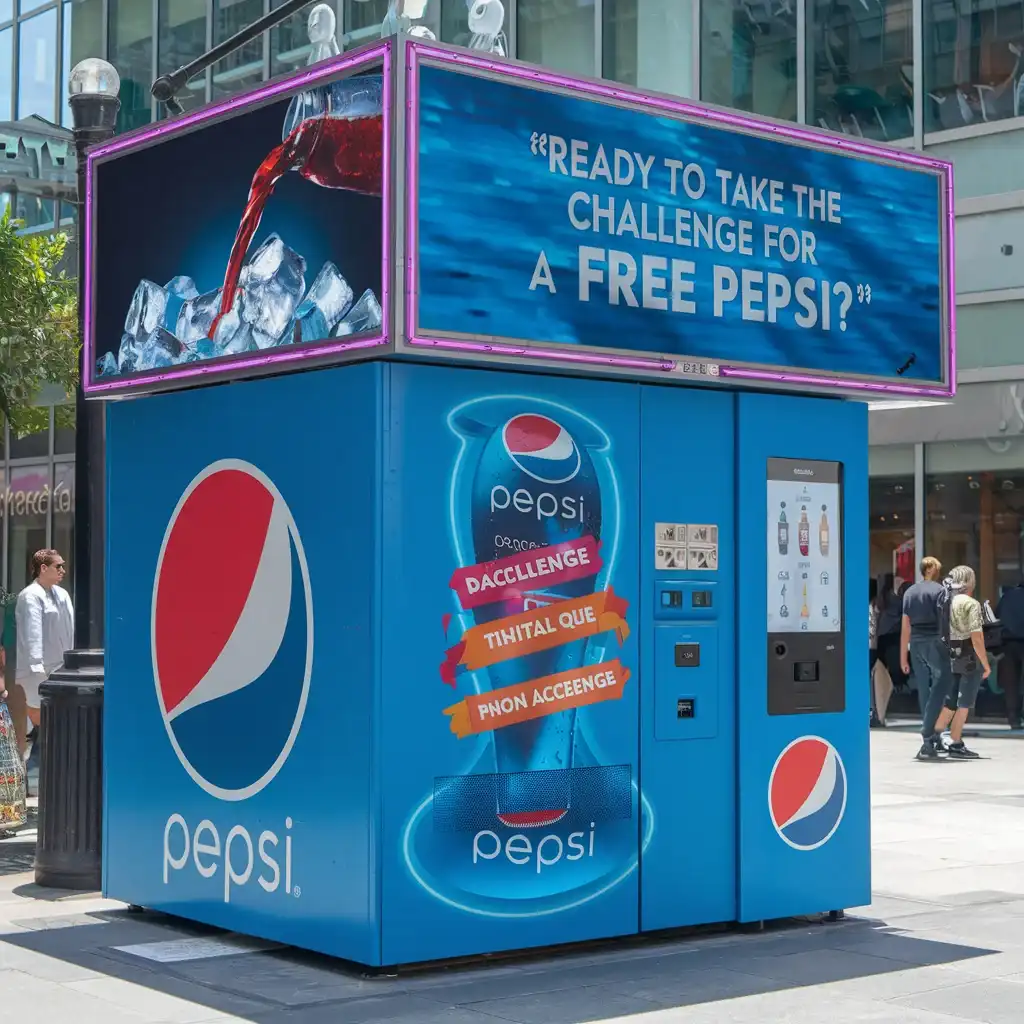
2. Augmented Reality (AR) Ads:
- For example, Nike used AR billboards in malls where shoppers could virtually try on their shoes by pointing their smartphones at the ad.

3. Event-Based OOH Ads:
- Example: Brands often sponsor sports events by placing their banners and screens in stadiums. A beverage company like Gatorade might place digital ads featuring athletes during a cricket match.
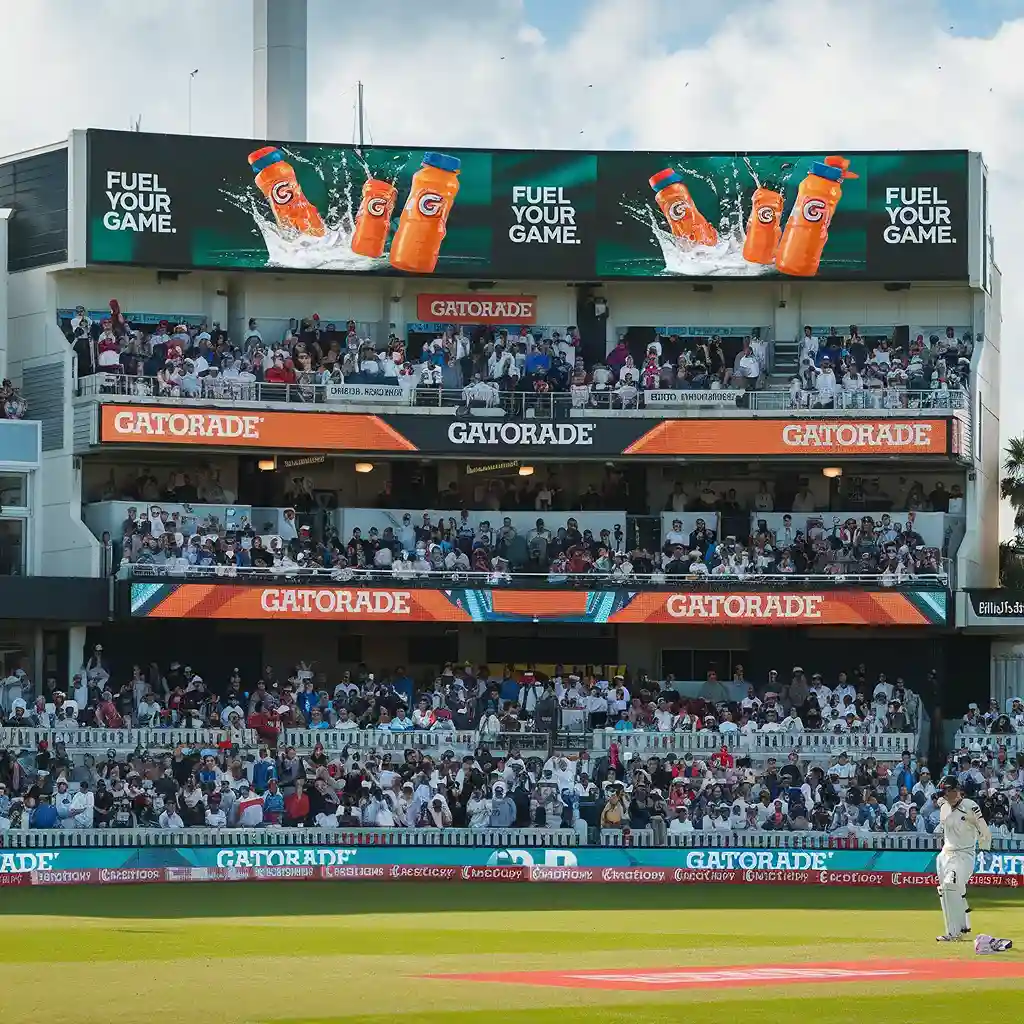
Why Choose OOH Advertising with a PR Agency?
Out-of-Home (OOH) advertising, combined with a PR agency's expertise, offers a strategic edge in amplifying your brand's presence. Each type of OOH advertising has unique advantages, which can be leveraged to maximize reach and impact. Here's how:
- Billboards: Provide massive reach and unparalleled brand recall. A PR agency can strategically select prime billboard locations to ensure your campaign captures maximum visibility.
- Street Furniture Ads: Offer hyper-local targeting. With the help of a PR agency, your message can effectively engage audiences in specific neighborhoods or areas.
- Transit Advertising: Ensures your message travels with your audience. A PR agency can plan and execute transit campaigns that resonate with commuters, enhancing your brand's exposure across multiple locations.
- Place-Based Media: Allows brands to engage audiences in a relevant and specific context. With a PR agency guiding your campaign, you can create impactful messaging tailored to unique environments like malls, gyms, or airports.
By partnering with a PR agency, you gain access to insights, creative strategies, and media expertise that ensure your OOH advertising campaigns are visually compelling and strategically aligned with your brand's goals.
Benefits of Out-of-Home
Advertising
OOH advertising offers several unique advantages, making it a popular business choice. Here are some key benefits:
- High Visibility
- OOH ads are hard to ignore since they are in busy, high-traffic areas. For instance, a well-lit digital billboard can attract thousands of eyes daily.
- Cost-Effective Reach
- Compared to TV or online ads, OOH ads deliver a broader reach at a lower cost per impression.
- Enhances Brand Recall
- Repeated exposure to OOH ads helps people remember your brand. A commuter seeing the same ad daily on the train is likelier to remember it.
- Complements Digital Campaigns
- OOH works seamlessly with online ads to create an omnichannel experience. For example, a food delivery app promoting discounts on billboards while running social media ads increases campaign effectiveness.
- Local Targeting
- Businesses can place ads strategically in areas relevant to their target audience. For example, a gym brand advertising near parks or jogging tracks.
Trends in OOH Advertising
The OOH advertising industry is evolving rapidly with the integration of technology. Some of the latest trends include:
- Digital OOH (DOOH)
- Internet-connected billboards that display dynamic and real-time ads.
- Example: Weather-based ads, such as a coffee brand promoting hot drinks on cold days.
- Data-Driven Campaigns
- Advertisers now use audience data to display tailored messages.
- Example: Ride-hailing services showing ads in areas with high traffic congestion.
- Interactive OOH Ads
- Technology like QR codes and augmented reality (AR) makes OOH ads more engaging.
- Example: A movie poster with a QR code lets users watch the trailer.
- Sustainability-Focused Campaigns
- Brands are using eco-friendly materials for ads or showcasing green initiatives.
- Example: Solar-powered billboards promoting electric vehicles.
Tips for Creating Effective OOH
Campaigns
To make your OOH campaigns impactful, follow these tips:
- Keep the Message Simple
- Use minimal text and a clear call-to-action (CTA). For instance, "Download our app today" is more effective than lengthy descriptions.
- Focus on Design
- Use bold fonts, vibrant colors, and high-quality visuals to grab attention.
- Choose the Right Location
- Select high-traffic areas that align with your target audience's demographics.
- Leverage Technology
- Incorporate digital displays or interactive elements like QR codes for a modern touch.
- Measure Campaign Success
- Track engagement metrics such as impressions, clicks (for digital), or foot traffic in the advertised location.
OOH vs. DOOH: What's the Difference?
While both OOH and DOOH advertising fall under the same umbrella, they differ significantly:
- Traditional OOH Advertising
Static, non-digital formats like printed billboards and posters.
Example: A poster on a bus shelter promoting a fitness brand.
- Digital OOH Advertising (DOOH)
It uses digital screens to display ads that can change in real time.
Example: A retail brand showing ads with live countdowns for flash sales.
Everything You Need to Know About Zero Dollar Marketing
Real-Life Examples of OOH
Advertising
-
McDonald's Billboards
McDonald's uses clever and creative billboards featuring its menu items. One campaign used the golden arches as directional signs to guide people to nearby outlets.
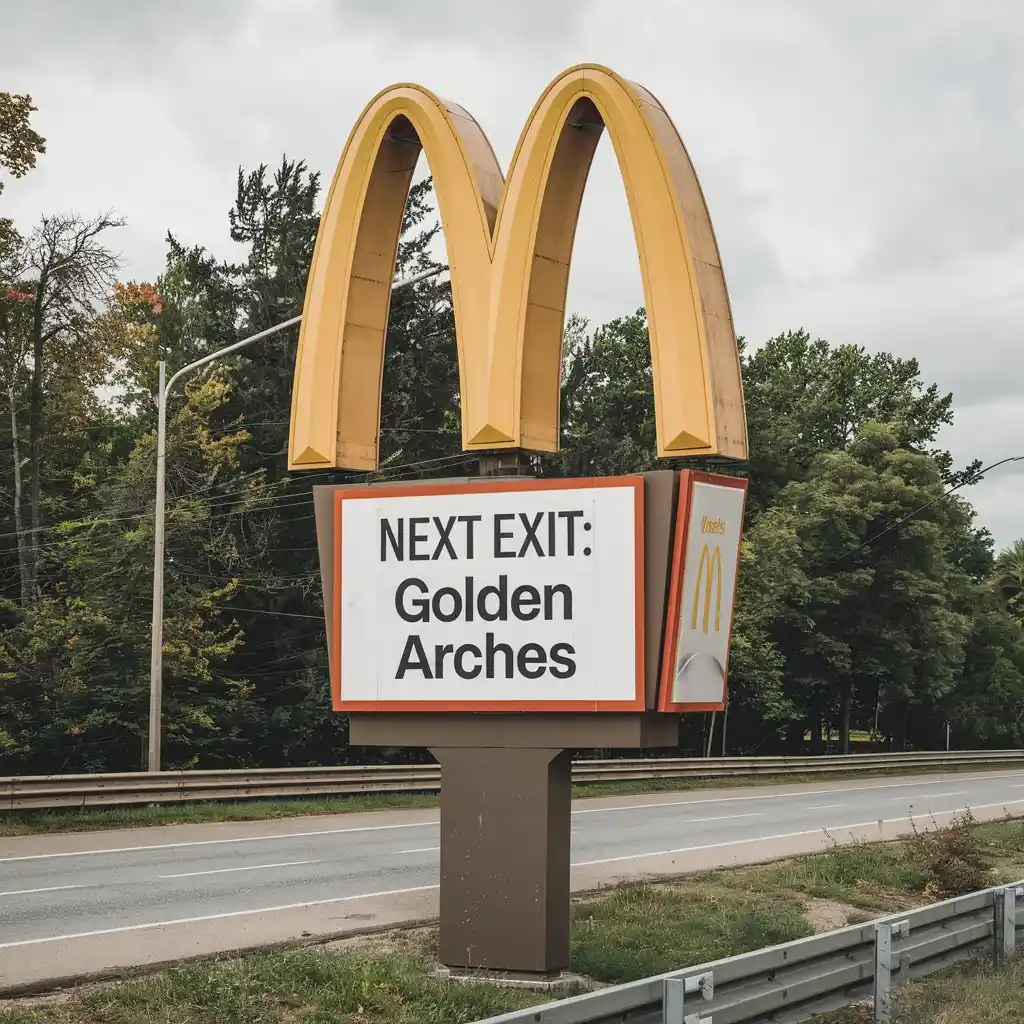
-
Netflix Campaigns
Netflix often uses transit advertising to promote its shows. For example, buses wrapped with "Squid Game Season 2" posters generated buzz and excitement among fans.
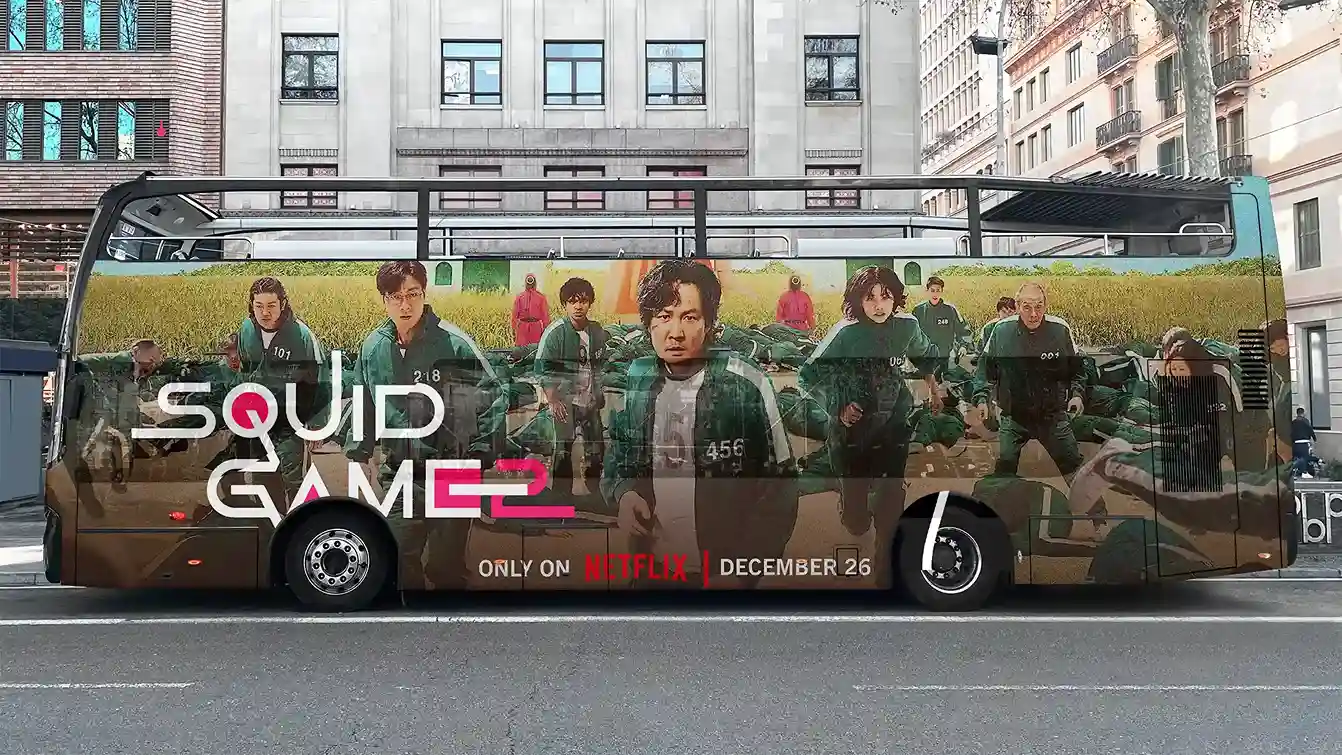
-
Amazon Prime's Mall Ads
Amazon Prime uses place-based media inside shopping malls to target shoppers and highlight upcoming series.
The Growth of Out-of-Home Advertising
in
India: A 2024 Outlook
India's Out-of-Home (OOH) Advertising market is set to witness remarkable growth, with projections estimating ad spending to reach US$486 million in 2024. This growth highlights brands' increasing reliance on outdoor advertising to reach diverse audiences nationwide.
Traditional OOH Dominates the Market
Traditional Out-of-Home Advertising continues to lead the segment, accounting for a significant US$380.5 million market volume in 2024. Formats such as billboards, transit ads, and street furniture remain popular choices for their ability to provide high visibility and brand recall.
India vs. Global Market Trends
While India's OOH market is expanding, the United States continues to dominate globally, with ad spending projected to reach a staggering US$9.34 billion in 2024. In comparison, India's per capita ad spending in OOH is estimated at US$0.34, indicating significant room for growth in the Indian market.
Factors Driving India's OOH Growth
Several factors contribute to the fast expansion of India's OOH advertising market:
The Road Ahead
India's OOH advertising market is evolving, blending traditional formats with cutting-edge digital technology to create impactful campaigns for brands looking to leverage outdoor media, 2024 promises to be a year of growth, innovation, and opportunities in the Indian advertising landscape.
Source : Statista
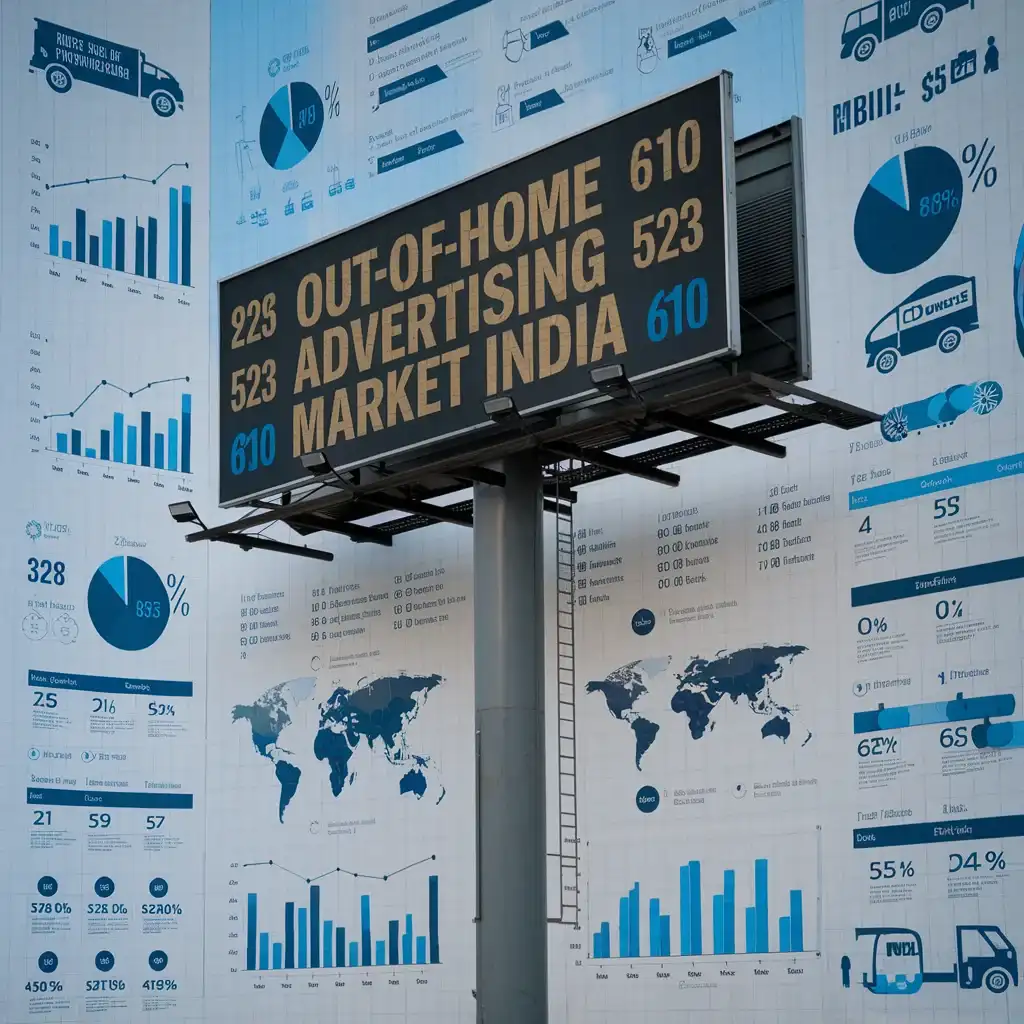
In nutshell
Out-of-Home (OOH) advertising is a powerful tool combining creativity, visibility, and technology to drive business results. Whether you're a local business or a global brand, OOH advertising can help you reach your target audience effectively and leave a lasting impact. With the market in India projected to grow to $486 million by 2024, now is the time to leverage the potential of OOH advertising.
Share
Table Of Contents
- What is Out-of-Home (OOH) Advertising?
- Types of OOH Advertising with Examples
- Benefits of Out-of-Home Advertising
- Trends in OOH Advertising
- Tips for Creating Effective OOH Campaigns
- OOH vs. DOOH: What's the Difference?
- Real-Life Examples of OOH Advertising
- The Future of Out-of-Home Advertising
